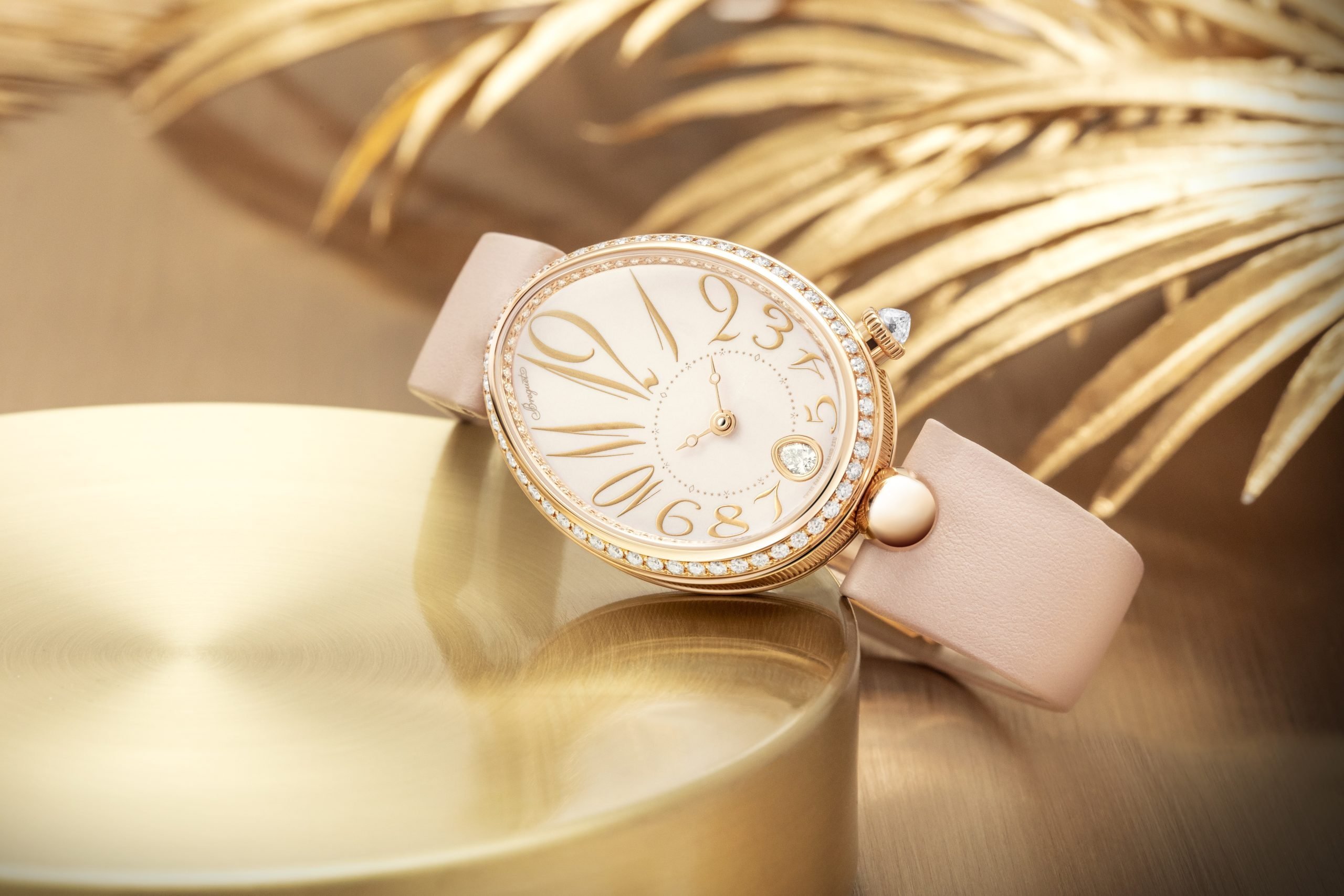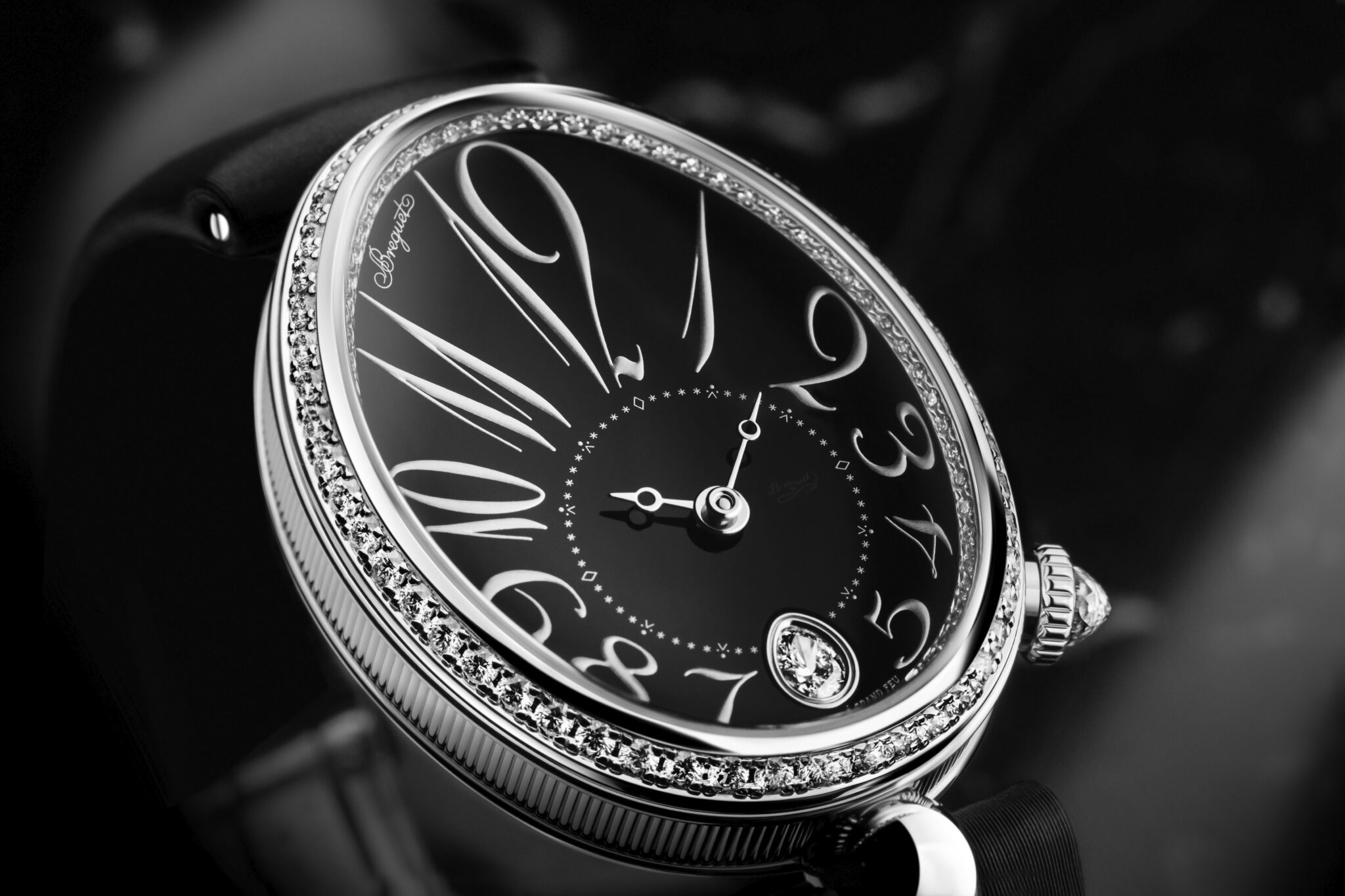Today, the secondary watch market is rapidly outpacing the firsthand market. The secondhand market is expected to increase by 9% from 2022 to 2026 compared to an estimated 6% increase for the primary market in the same timeframe, according to Boston Consulting Group. While there are a number of practical factors that contribute to the growing interest in vintage and pre-owned, like decreased production numbers of new watches due to the pandemic, shifts in style preferences are also at play.
More and more women are collecting and investing in luxury timepieces, and consequently, we’ve seen a growing interest in smaller sizing and simplicity of design. Where many modern models fall short, the vintage and pre-owned market is flush with wristwatches that offer modest proportions and aesthetics that have invariably withstood the test of time.

Women Have Influenced Wristwatch Trends for Two Centuries and Counting
In a certain sense, one could argue that women have always been setting the trends for wristwatches. The first wristwatches ever made were in fact for ladies. It started with Abraham-Louis Breguet back in 1810 who created an oblong shaped repeater for the wrist of one of his esteemed clients, the Queen of Naples. This wristwatch, designed over 200 years ago, went on to inspire the brand’s Reine de Naples collection launched in 2002, which has now become a mainstay of Breguet‘s catalog.

It would be roughly another 50 years before we would see the next wristwatch appear, again on the wrist of a prominent woman. In 1868, Patek Philippe developed a bracelet watch for Countess Koscowicz of Hungary. Throughout the remainder of the 19th century, the trend of dainty timekeepers embedded in sophisticated bracelets swept across Europe, and the wristwatch became the fashion item and status symbol for women of style and substance.
Into the early 1900s, the Art Deco style created the perfect inspiration for ladies wristwatches. While aesthetics largely remained the focus of these petite yet opulent timepieces, brands began to play with technical achievements as well. One of the most notable wristwatches to come from the era was Jaeger-LeCoultre’s famous caliber 101. This impressive example of micromechanical engineering debuted in 1929 as the smallest mechanical movement ever made—a title it’s still able to claim nearly a century later—and continues to appear in the brand’s modern catalog with models like the 101 Reine, Bangle, Snowdrop, and Feuille.

The Shift: Men’s Wristwatches Enter the Market
The first men’s wristwatch, the Cartier Santos, also launched in the early 20th century. The now iconic model was designed specifically for pilots and made its initial debut in 1904. Still, it wouldn’t be until after WWI that the wristwatch would become as popular among men as it has been among women for decades.
Following the war, the wristwatch shifted from a fashion accessory to a tool, inspired by the models worn in the trenches. The rise of these rugged, utilitarian timekeepers among men of the era went on to set the tone for the wristwatch as we know it today, overshadowing the conventions that had been established by women’s wristwatches for over 100 years prior.
Women are Reclaiming Their Power in the Watch Industry in the 21st Century
It has taken another century for women to begin to reclaim their presence in the watch industry. Thanks to increasing numbers of women seeking higher education and roles in the paid labor force, women are rapidly gaining economic power, controlling more than 60% of all personal wealth in the U.S. according to the Federal Reserve and 40% of working women in the U.S. out-earning their husbands according to the U.S. Bureau of Labor Statistics. And these women see wristwatches not only as a potent symbol of style and status that’s fun to wear but also as a viable long-term investment on par with fine art, handbags, and wine.
Still, on the whole, the modern watches created for women have continually fallen short, and their male counterparts have often skewed toward large proportions and retained that rugged, utilitarian aesthetic. While some women appreciate bulkier, more functional designs, others are looking back to watches past—favoring vintage designs over contemporary ones—and both brands and their male consumers are taking notice.
Slowly but surely, we are seeing a shift away from the trend of oversized tool watches and an increasing number of smaller or more midsized, time only models as well as loads of vintage reissues. In addition, with the pandemic slowing the production of new watches over the past several years, there’s never been a better time to buy in the vintage and pre-owned market. What was once reserved for pawnshops and eBay has exploded into a $27 billion dollar business and is expected to hit $85 billion in the next decade, thereby outselling new models, according to a new industry report by Swiss firm LuxeConsult. The vintage and pre-owned market is also particularly appealing to conscious shoppers who value its contribution to the circular economy—yet another trend driven by a new generation of women.
Now Men are Wearing Women’s Vintage Watches
It seems like the tables are beginning to turn. While women have spent decades looking to the men’s cases at their local watch boutiques out of dissatisfaction with the ladies’ options, men are now starting to take interest in vintage women’s watches over bolder contemporary pieces. In the past couple years in particular, we have seen a number of prominent male celebrities opting for vintage women’s timepieces.
Rapper, singer, songwriter, and record producer Bad Bunny was one of the earliest to flaunt his collection of vintage women’s models whether performing at the 65th annual Grammy Awards, sitting courtside at a Lakers game, or on set for a photoshoot with GQ magazine. The three-time Grammy award winner favors yellow gold vintage models from brands like Patek Philippe and Audemars Piguet, which embody the hallmarks of the earliest wristwatches.
Fellow musician The Weekend was also spotted wearing a women’s wristwatch at this year’s Cannes Film Festival: the Piaget Limelight Gala high jewelry watch. While this is not a vintage model, it’s certainly vintage inspired and ticks all the boxes in terms of modest sizing and a refined, no frills aesthetic. Piaget has been extremely imaginative in its ladies designs since the 1960s thanks to the brand’s dual expertise in both watch and jewelry making. This approach clearly extends in its collections today, like the Limelight Gala.
Tyler Gregory Okonma, better known as Tyler the Creator, is another rapper and record producer who has hopped on the trend of wearing women’s vintage timepieces. His model of choice has been the Cartier Obus, a distinctly Art Deco model with a square case and prominent bullet-form lugs hailing from 1923. Actors Timothee Chalamet and Austin Butler are two of Cartier’s newest brand ambassadors, and both have opted for some of the brand’s more modest and timeless designs. Butler chose a vintage model over one from Cartier’s current catalog when hitting the red carpet, while Chalamet has sported a ladies’ model: the Mini Panthere.
Vintage Watch Retailers and Dealers Weigh In: Is the Trend Here to Stay?
“Watch trends are similar to fashion trends in that there are cycles, but watch trends tend to last much longer than fashion trends,” says Zoe Abelson, a watch industry veteran and founder of Graal, an online luxury watch marketplace. So what does that mean for women’s watches in the secondary market and more importantly the next investment you make in your watch collection?
“Stylistically we’re seeing a lot of neo-vintage timepieces paired with fashion reminiscent of the 80s and 90s,” added Abelson. “However, outside of fashion trends, I believe the newer demand for small and mid-size timepieces is also value related. During the recent period when secondary watch market prices soared, collectors started looking for undervalued alternatives like smaller versions of popular watches—a 33mm-37mm version of the Audemar Piguet Royal Oaks, for example.”
Julia Azeroual, the dealer and force behind one of the leading watch industry TikTok accounts, @watchbyjuls1 (355,000-plus followers) and Eugene Tutunikov, CEO of SwissWatchExpo, the premiere online retailer of authentic vintage and pre-owned luxury watches, both agree the trend isn’t going anywhere, at least not anytime soon, and now is a great time to invest in vintage and pre-owned.
For Azeroual, it’s twofold. “When young professionals come to me looking for a watch, they want something elegant yet easy to wear from the office to the evening and on the weekend, and vintage or pre-owned are perfect for that,” she shared. “While brands are designing more versatile, midsize watches for their current collections, vintage pieces tend to offer a thinner, lighter, more wearable silhouette that just can’t quite be replicated—the real small watches are vintage,” Azeroual added.
Tutunikov also notes the recent shift in demand but believes the investment in more modest and timeless vintage and pre-owned models will far outlive any trend. “There has been a notable surge in demand for smaller and women’s pre-owned timepieces,” Tutunikov asserts. “This trend has brought a fresh perspective on watches, transforming them not only for timekeeping but also for accessorizing and elevating both men’s and women’s personal style. However, vintage watches that are more ‘on trend’ are still a strong investment in the long term,” he confirms. “These timepieces possess a uniqueness that is rare to come by. In particular, vintage watches from prestigious brands like Rolex, Cartier, and Audemar Piguet hold remarkable value, presenting a great investment opportunity.”











